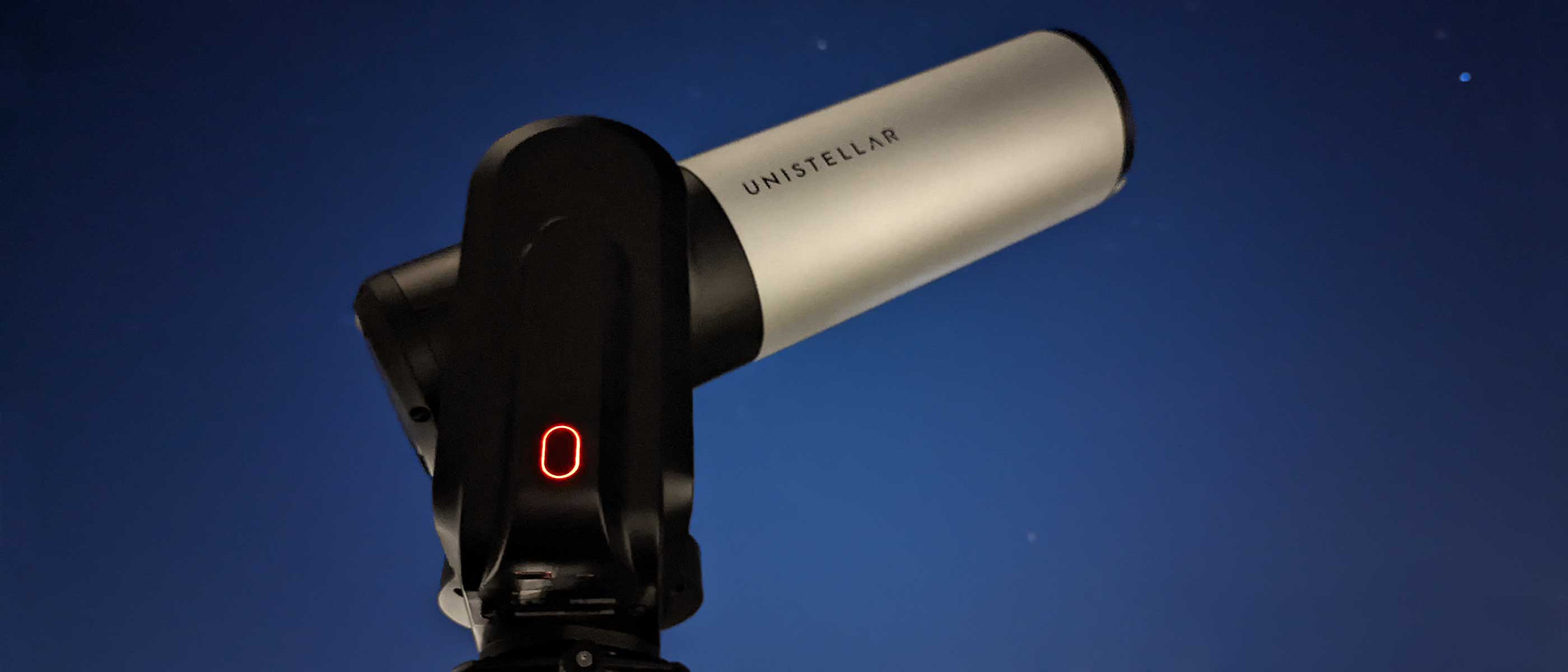Space Verdict
A fantastically designed telescope, the eVscope 2 is brilliant for photographers who want to get into astronomy and have the budget or astronomers that want an all-in-one system that’s simple to use and setup. It perhaps won’t be as well-received by veteran telescope users that are used to a more traditional way of viewing, but can still produce some stunning results.
Pros
- +
Effortlessly simple setup
- +
Stunning, sleek design is jaw-dropping
- +
Nikon eyepiece for those who want it
- +
App is well-designed and easy to control
Cons
- -
Extremely pricey, especially for new astronomers
- -
May not appeal to purist telescope users
Why you can trust Space.com
The Unistellar eVscope 2 is a step away from traditional telescope stargazing and instead hosts an in-built camera, sleek design and electronic eyepiece. It’s the second iteration of the eVscope line and has some noticeable improvements in both design and accessibility. The telescope itself is a 4.5-inch (114mm) reflector with a focal ratio of f/3.9 making it perfect for wider field of view celestial objects such as nebulae.
Optical design: Reflector
Aperture: 4.5-inches (114 mm)
Focal length: 17.7-inches (450 mm)
Focal ratio: f/3.9
Highest useful magnification: 50x optical, 150x digital
Total kit weight: 19.8 lbs (9kg) including tripod
Mount type: Alt-azimuth
Inside is a 7.7MP image sensor and new to the eVscope 2 is an electronic eyepiece designed by Nikon for those that want to get tactile with the telescope. The simple layout, stylish design and an excellent smartphone app user interface makes the eVscope 2 a doddle to use and photograph the night sky with, especially with its enhanced tracking feature. However, all these premium aspects come at a cost, so it’s not for those working to a tight budget.
Unistellar eVscope 2: Design
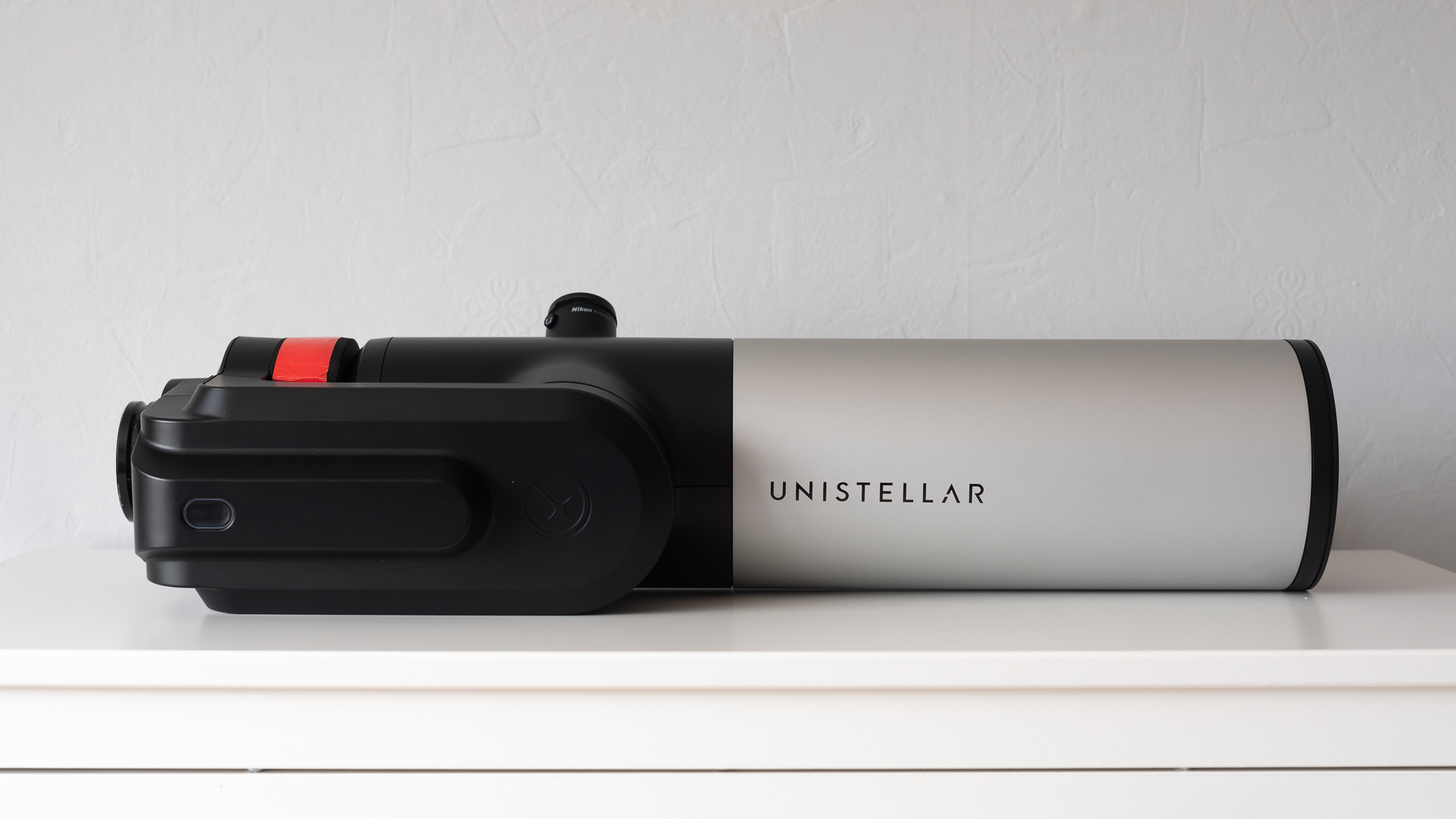
- Incredibly stunning looks and solid telescope construction
- Very sturdy tripod and simple telescope mount
- Eyepiece will appeal to more traditional astronomers
The Unistellar eVscope 2.0 telescope is a jaw-droppingly beautiful night sky instrument. We can immediately tell that every aspect of this telescope has been carefully designed, not just for the accuracy of its optics, but also the look and feel of the telescope itself. It feels minimalist, with simple but refined construction throughout. A single power button and two connection ports mean setup is a doddle.
The main tube is of metal and plastic construction but feels premium in the hand and stands solid. It has a Nikon eyepiece which is a new addition to Unistellar’s telescope range (the original eQuinox didn’t have one) and this appeals to purist astronomers and clubs who like to share views without passing around a smartphone which it otherwise syncs to. The eyepiece is comfortable to use and is surrounded by soft rubber, but this rubber does trap dust and fibers easily which can look untidy unless cleaned. Cleverly, Unistellar has hidden a Bahtinov mask in the cap cover which unscrews and pops right out for quick focusing of celestial objects.
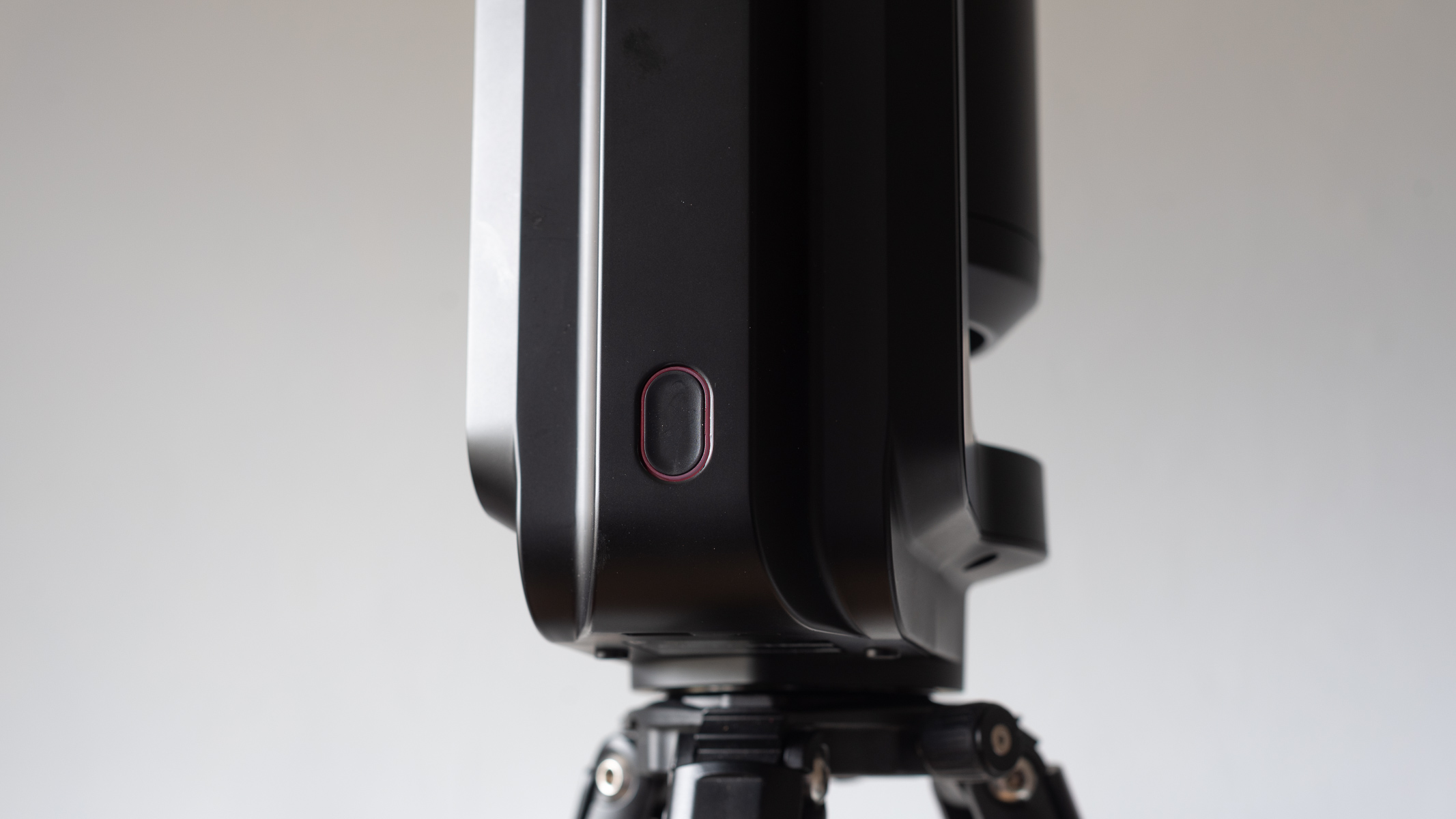
The eVscope 2 comes with a sturdy metal tripod but still feels lightweight, making it ideal to travel with. The tripod mount is simple, just slot the telescope in from the top and tighten the two set screws. A beautiful satin black metal finish on the tripod complements the same from the telescope mount and lower half of the tube and the telescope sits upright like a rocket when first starting up. It looks futuristic and we love it.
The telescope even has its own backpack (if you opt for this purchase option) which it snugly slides into. An extra carry pouch can take extra accessories and fits inside the backpack, bolstering the telescope's fit. The backpack even has extra pockets and multiple adjustments around the shoulders and waist straps to make it easier to carry long distances. Pop the tripod on the side of the bag with the accompanying straps and you're ready to go.
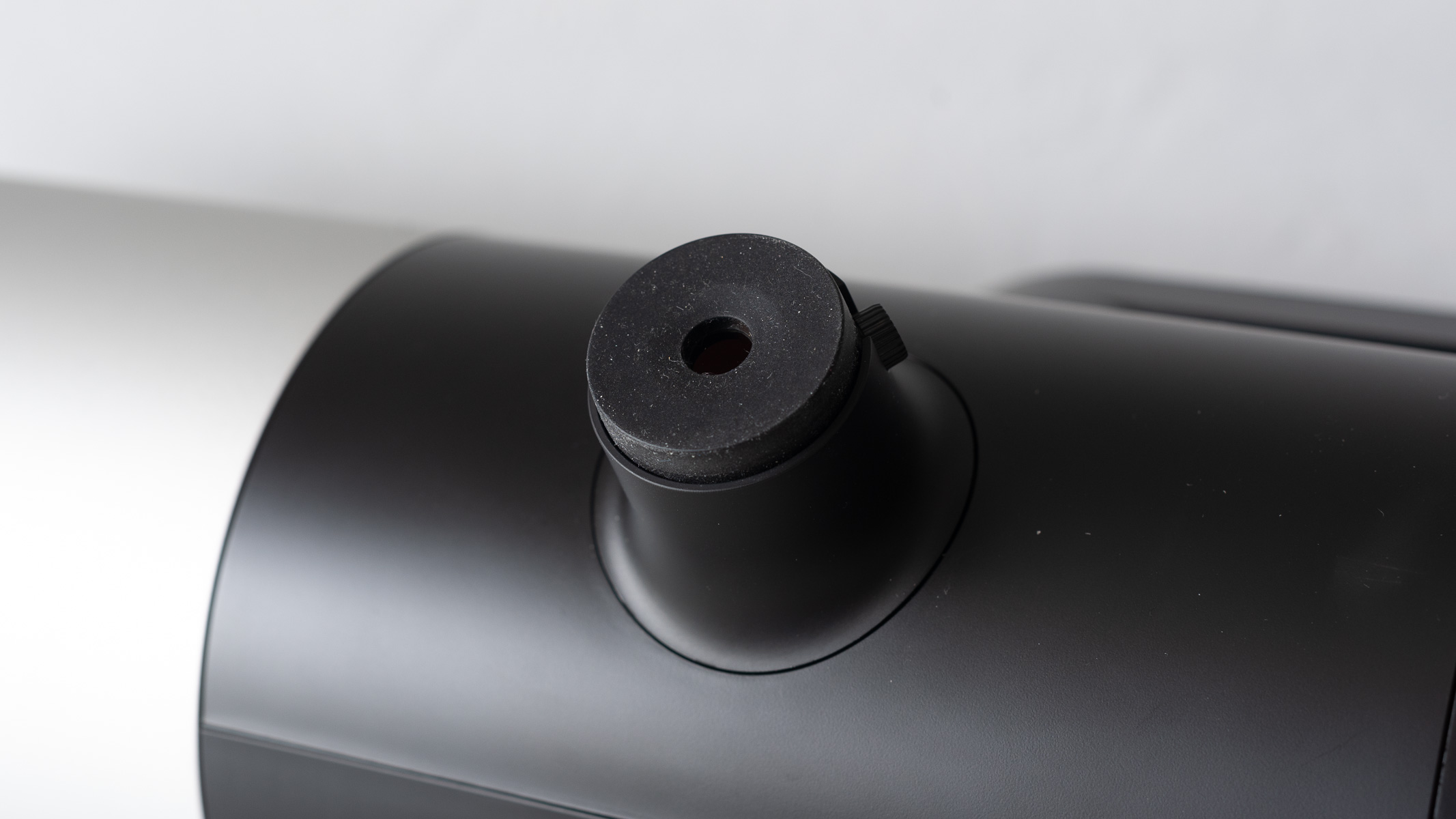
A single button resides on the telescope which makes it fast to set up. Simply hit the power button and synchronize it to the Unistellar app on your smart device (min iOS 12 or Android 6). The app looks great as well, and feels easier to navigate than traditional go-to motorized telescope mounts that use handheld control remotes. When repositioning the telescope with the intuitive on-screen movement controls, haptic feedback produces little vibrations to inform the user that the movement is still going. Speed can be controlled and it can move in both axes simultaneously (so a diagonal movement is possible and smooth).
Unistellar eVscope 2: Performance
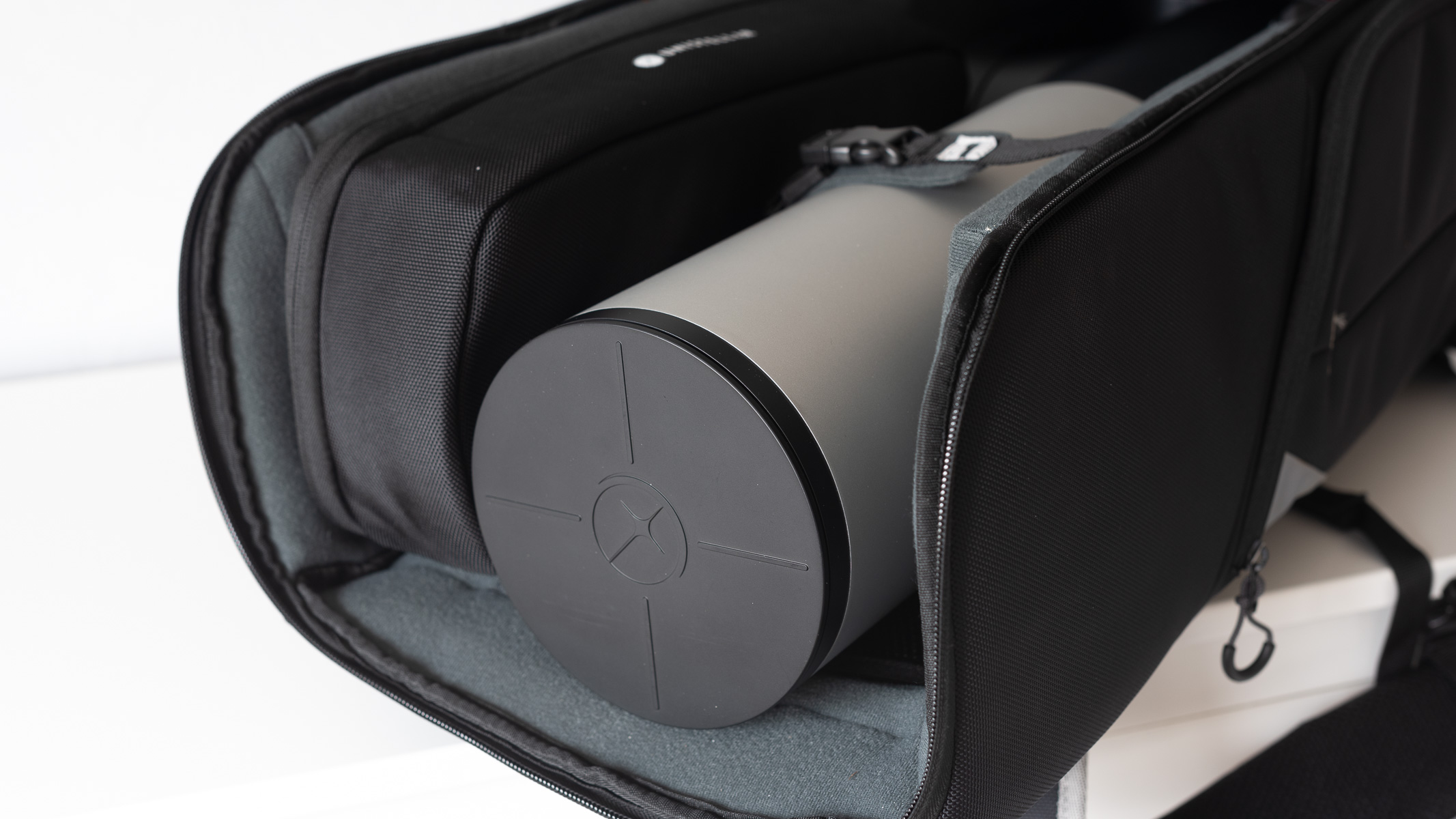
- Enhanced view builds a clearer view
- Object go-to is intuitive and fast
- Astrophotos save with a stamp for essential info
One of the first things we were struck by when using the eVscope 2 is just how easy it is to navigate the night sky. Even if you know nothing about constellations, current planetary alignment, Moon phases, or the names and positions of nebulae, the smart device app can fling you to places within the press of the screen.
You'll operate the telescope solely through the app, so make sure your smart device and eVscope 2 are both charged fully before heading out. Once there though, the app gives full, smooth manual control of the telescope and displays a live view in the top of the screen. The image can be quite laggy though, with it taking quite some time to nail focus because of this. Frustrating though it may be, the real magic is in the automatic navigation through the Explore mode.
In Explore mode there are rows of suggested celestial objects, all recommended based on location and time of using the telescope. We found this kind of display mightily impressive and ever so useful for the uninitiated astronomer, but also equally more intuitive for the veteran stargazer as well as it removes much of the alignment and finderscope admin traditional telescopes require. There's even an Advanced section to input bespoke positioning: Go to RA/Dec and Go to Alt/Az.
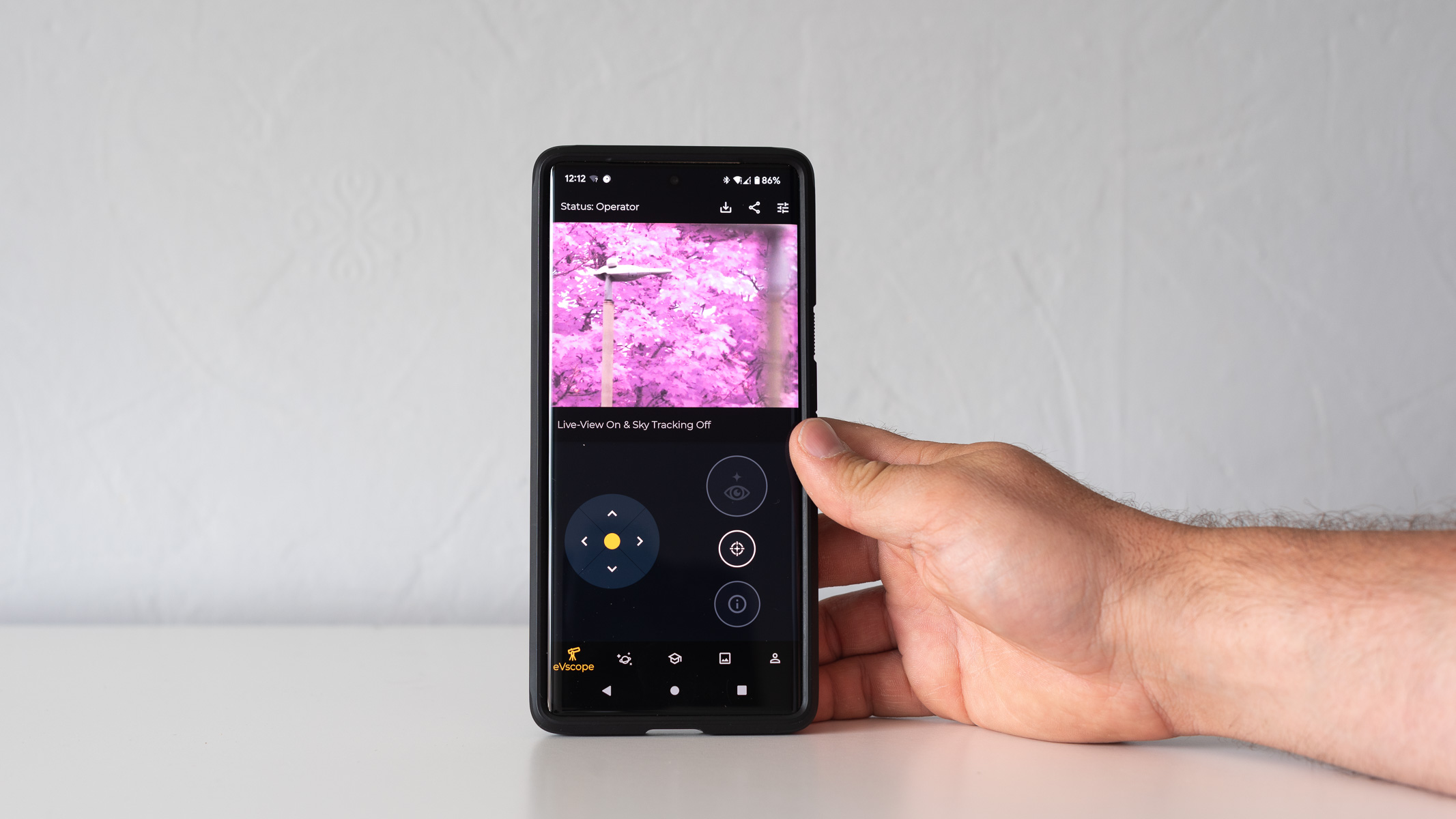
Astrophotographers that are hoping for highly detailed imagery for stunning, large prints may prefer to use a traditional telescope with an eyepiece adapter because the 7.7MP photos the eVscope 2 creates does feel rather dated compared with DSLR or mirrorless resolution. However, it certainly matches or outperforms many of the astrocams that are designed for astrophotography currently on the market. Options will be a tad limited though since the only eyepiece on the camera is an electronic eyepiece. That means no changing magnifications and no Barlow lenses.
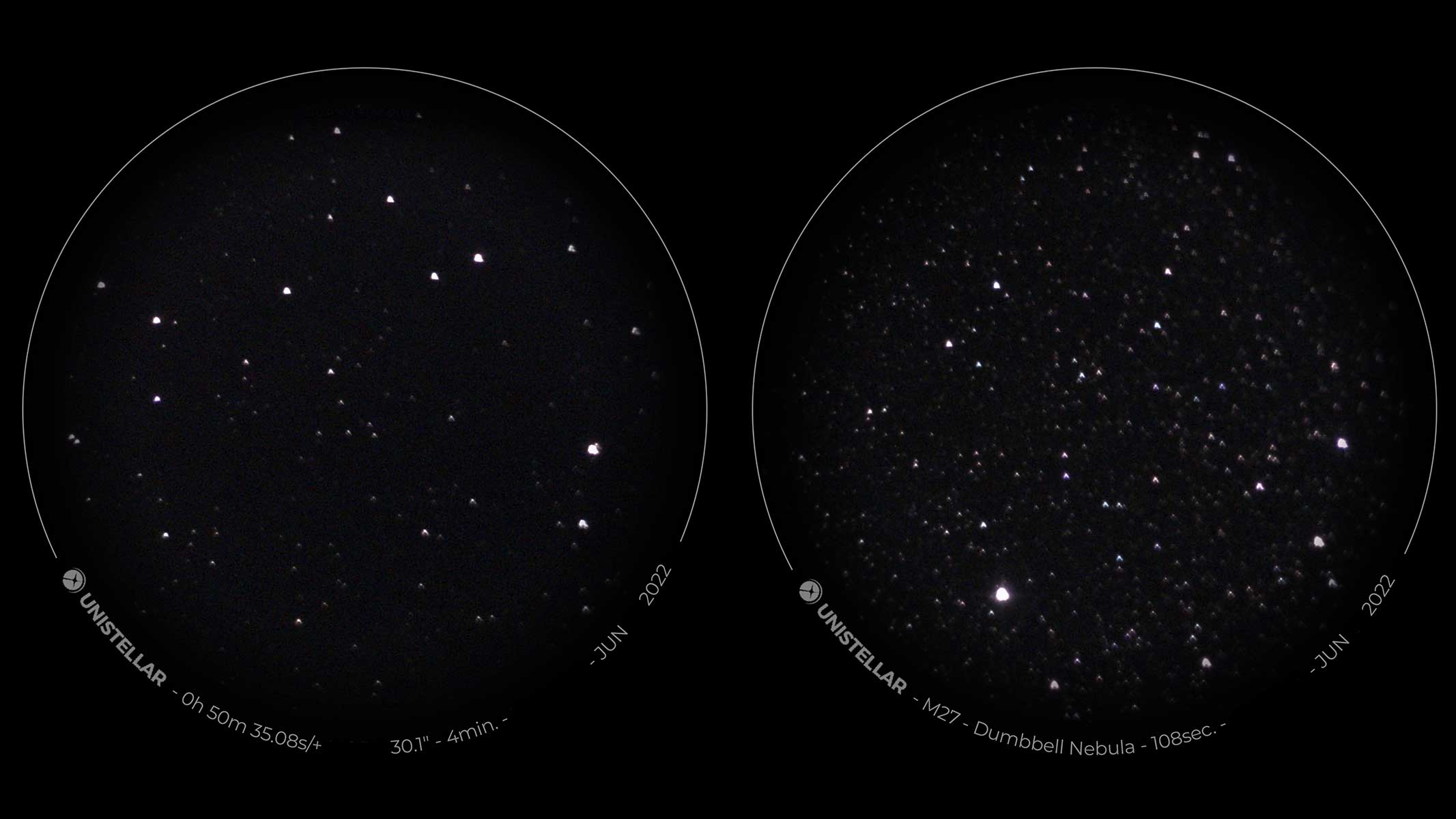
In every other way though, the eVscope 2 is as close to perfect as you can currently get (in the author's opinion) for a budding astrophotographer. The technical alignment processes are a thing of the past, you don't need to learn placements in the night sky, and set-up takes just a few minutes. It feels premium (akin to camera equipment) and is easily transported anywhere.
Unistellar eVscope 2: Functionality
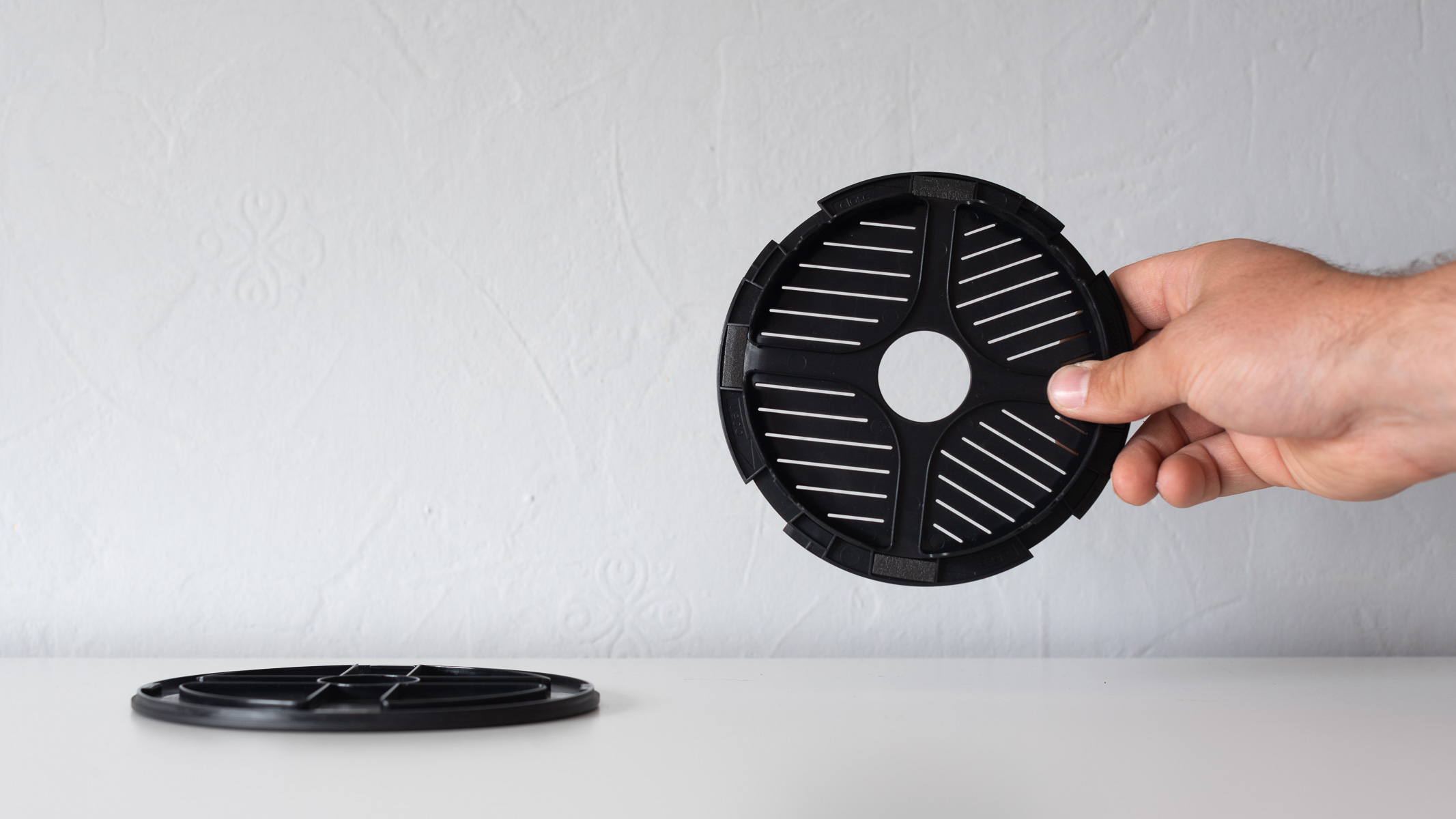
- App allows you to easily go-to celestial objects
- Ultimate motorized control to fine-tune telescope positioning
- Have to set the gain on live view for use in daylight
As a telescope it functions very well. Some astronomers used to more traditional telescopes may not like the fact there's no spotting scope and there’s limited support for additional accessories, but the eVscope 2 is very clearly not pretending to be that kind of observing instrument. However, it's worth bearing in mind that the eyepiece is fixed and is electronic. That means an OLED screen feeds the view in the eyepiece, akin to mirrorless camera electronic viewfinders, so there is no true optical view with this telescope. However, the micro OLED screen is best-in-class and gives good contrast with deep blacks for a realistic viewing experience.

Should I buy the eVscope 2?
While the telescope may seem a little on the more costly side initially, one has to bear in mind that it's not just a telescope for observing but also contains imaging technology negating the need for additional camera equipment to be bought and mounted. When this is taken into consideration and is paired with the sleek design, simple app layout, excellent Nikon eyepiece and minimal setup time, it's hard to balk at the price. For sure, photographers will absolutely love the eVscope 2 because it looks and feels much more like premium photography kit and so is familiar in appearance and operation. Purist astronomers that are used to using finder scopes, alignment processes and slightly dated handheld control remotes may find it a little jarring to start with, but the speed and beauty of the eVscope 2 is definitely worth trying out.
If this product isn’t for you
Even though the Unistellar eVscope 2 is ideal for complete beginners to astronomy, photographers wanting to go all-in on astrophotography, or the impatient astronomer, we’re aware this might not be for you.
Instead, we'd recommend taking a look at the Celestron NexStar 8SE which is also motorized, has incredible clear, bright optics and, when combined with the purchase of DSLR or mirrorless camera, comes out at around the same price.
For beginners who want a simple point-and-view telescope we'd recommend the Celestron StarSense Explorer DX 130AZ which also connects to an app via a smart device for quick observing but at a tenth of the price of the eVscope 2 you expect it to lack some features, one of which is motorized drive.
Join our Space Forums to keep talking space on the latest missions, night sky and more! And if you have a news tip, correction or comment, let us know at: community@space.com.

Jase Parnell-Brookes is the Managing Editor for e-commerce for Space and Live Science. Previously the Channel Editor for Cameras and Skywatching at Space, Jase has been an editor and contributing expert across a wide range of publications since 2010. Based in the UK, they are also an award-winning photographer and educator winning the Gold Prize award in the Nikon Photo Contest 2018/19 and named Digital Photographer of the Year in 2014. After completing their Masters degree in 2011 and qualifying as a teacher in 2012, Jase has spent the last two decades studying and working in photography and publishing in multiple areas, and specializes in low light optics and camera systems.
